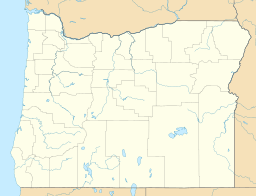China Hat (Oregon) facts for kids
Quick facts for kids China Hat |
|
|---|---|
| Highest point | |
| Elevation | 6,573 |
| Geography | |
| Location | Deschutes, Oregon, U.S. |
| Parent range | Cascade Range |
| Topo map | USGS China Hat |
| Geology | |
| Age of rock | 6.3 - 7.4 Ma |
| Mountain type | Pyroclastic cone |
| Volcanic arc | Cascade Volcanic Arc |
China Hat is a special kind of volcanic hill called a butte. It is located in Deschutes County, Oregon, in the United States. This butte sits on the side of a larger volcano known as Newberry Volcano.
China Hat is a type of lava dome made from a rock called rhyolite. It formed a long, long time ago during the Middle Pleistocene era. This was a period in Earth's history that ended about 11,700 years ago. Both China Hat and a nearby hill called East Butte are covered by layers of ash from ancient volcanic eruptions. This ash includes Mazama Ash and Newberry Ash.
What is China Hat?
China Hat is a unique landform. It is a volcanic butte, which means it's a hill with steep sides and a flat top. It was formed by volcanic activity, but it's not a typical cone-shaped volcano. Instead, it's a lava dome. This means it was created when very thick, sticky lava pushed up from underground but didn't flow far. It just piled up around the vent, forming a dome shape.
How Old is China Hat?
China Hat is quite old! Scientists believe it formed between 6.3 and 7.4 million years ago. This time period is known as the Miocene epoch. It's part of the Cascade Volcanic Arc, a chain of volcanoes that stretches along the western part of North America.
Getting to China Hat
A road called China Hat Road is named after this butte. This road starts in the city of Bend and goes all the way to Fort Rock. Along this road, you can find China Hat Campground. This is a popular spot for camping near the butte.
How China Hat Got Its Name
The butte was given the name "China Hat" because of how it looks from a distance. If you view it from Fort Rock, its shape reminds people of an Asian conical hat. This type of hat is often worn by people in some parts of Asia, including Chinese immigrant laborers who worked in the area long ago.


